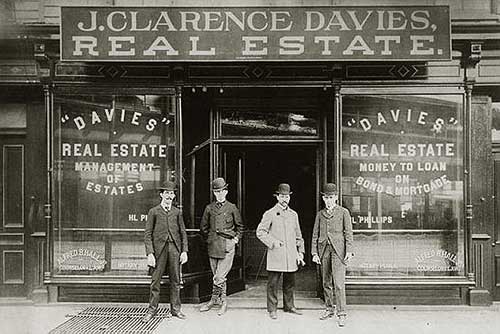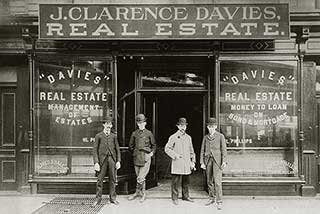What is Cash-On-Cash ROI?
The cash-on-cash ROI metric shows the power of leverage when investing with borrowed funds.
The Cash-on-cash ROI method is an investment metric popular with investors who finance investments by borrowing funds—buying on margin with brokers, or securing loans to finance real estate purchases, for instance. Cash-on-cash ROI, in other words, is a favorite metric with investors who take advantage of financial leverage.
Define Cash-on-cash ROI
The Cash-on-cash ROI metric is a variation form of the Simple ROI profitability metric that considers as investment costs only the pre-tax cash portions (or capital portions) of investment costs.
In such cases, the cash-on-cash ROI for an investor who buys and then sells a property during the life of the loan can be quite different from the simple ROI measure for the same investment. The former focuses on cash the investor supplies, while the latter focuses on total investment costs.
Comparing cash-on-cash ROI with simple ROI, the cash-on-cash method provides an arguably truer picture of investment profitability.
Comparing Cash-on-cash ROI to simple ROI
Examples below compare cash-on-cash ROI with the more familiar ROI metric, simple ROI. The illustrations show how investors increase or decrease profits by investing with loans or external funds. Cash-on-cash ROI, in other words, reveals the power of investor leverage.


Examples below focus on three themes:
- First, the nature of the cash-on-cash return on investment metric and the unique information it provides to those when making short-term use of long-term borrowing to fund investments.
- Second, three different ways that investors calculate Return on Investment, including cash-on-cash ROI.
- Third, explaining how the cash-on-cash concept illustrates the power of leverage to magnify investor gains or losses.
Contents and
What is Return on Capital?
Return on Capital is the Business Version of Cash-on-Cash ROI
Businesspeople sometimes use the term Return on Capital, referring to a similar ROI approach for investments or costly actions where investment costs are partially borne by the investing company with its "capital," while the investor covers the remaining costs through loans, grants, tax incentives, or some other kind of external funding.
In such cases, "Return on capital" (just like "Cash-on-cash") shows the return on the investor's funds directly.
Note that "Return on capital" in this sense is different from a family of ROI-like profitability metrics that measure a company's ability to earn from its asset base or equity, such as Return on Investor Capital (ROIC), Return on Capital Employed (ROCE), or Return on Equity (ROE).
Investors Calculate Return in Different Ways
Consider a property an investor buys for $1,000,000 on 1 January. One year later, the investor sells it for $1,200,000. Those with an interest in such transactions typically take one of 3 different return on investment (ROI) approaches to evaluating this investment.
Investor Metric 1
First-Pass Simple ROI
A first-pass simple ROI for this investment results entirely from the two figures above:
Simple ROI = (Investment Gains – Investment Cost) / (Investment cost)
= (1,200,000 – 1,000,000) / (1,000,000)
= 20.0%
An investor might use this approach when making a first-pass comparison between a large number of competing investments, to distinguish the better investment prospects from the worst.
Investor Metric 3
Cash-on-Cash ROI
Cash-on-cash ROI focuses only on the real pre-tax cash inflows to the investor and the outflows the investor pays by the close of the investment. Assume the following:
- This example investment is not an income producing property. Otherwise, there could be gains in addition to the sale price of $1,200,000.
- After one year, the investor's actual cash payments are as follows:
$200,000 Initial down payment
$2,400 Loan origination and loan closing fees
$9,600 Insurance and maintenance costs
$48,000 Twelve monthly loan payments ($38,000 interest + $10,000 principal)
Total Cash payments = $260,000
- After one year, when the property sells for $1,200,000, the investor's total cash payments are $260,000 (including the down payment), and the remaining loan balance after one year is $790,000.
- When the investor pays off the $790,000 remaining loan balance from the $1,200,000 sale price, the total cash returns on this investment are $410,000.
The Cash-on-cash Return on investment is thus:
Cash-on-cash ROI = ($Total cash gains – Total cash costs) / Total cash costs
= ($410,000 – $260,000) / $260,000
= 57.7%
Conclusions
What is the Real ROI From This Investment?
What's the real ROI from this investment? The example figures above led to three different results for the same investment:
- First-pass simple ROI: 20.0%
- Cost-accurate simple ROI: 13.2%
- cash-on-cash ROI: 57.7%
In reality, most investors base investment choices on results of the third metric above, the "cash-on-cash ROI." Note, however, that none of the above ROI figures by itself considers investment risk, that is, the chance that the property will not increase in value as the investor hoped.
Those who perform risk analysis on potential investments prefer the cash-on-cash version of the metric for showing the range of possible investment outcomes.
The Downside to Leverage: Greater Risk
Suppose instead all of the same investment costs shown in this example, but instead of selling at a gain, the investor sells the same property after one year for the same $1,000,000 as the purchase price. In that case, the cash gains from the sale are $210,000 and "cash-on-cash ROI" becomes:
cash-on-cash ROI = ($210,000 – $260,000) / $260,000
= –19.2%.
Or, suppose instead that the investor sells after one year for less than the purchase price, at $900,000. In that case, cash gains after the sale are $110,000, and "cash-on-cash ROI" is:
cash-on-cash ROI = ($110,000 – $260,000) / $260,000
= –57.7%.
Winning vs. Losing with Leverage Depends on the Economy
Comparing the several "cash-on-cash ROI" figures shows most clearly the effect of leverage (operating with borrowed funds) on possible gains and possible losses, depending on whether the economy (or market prices) improves or worsens.

